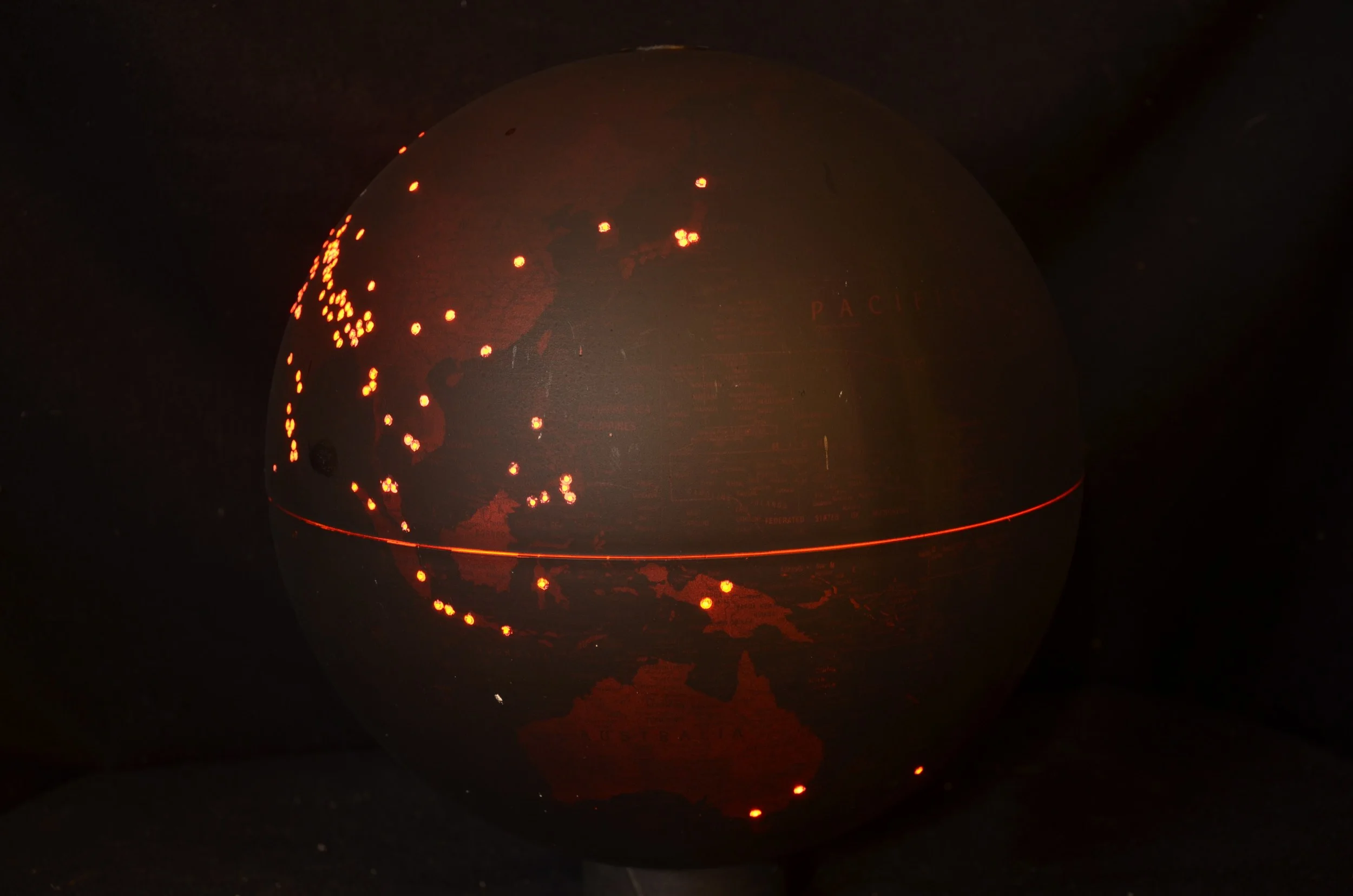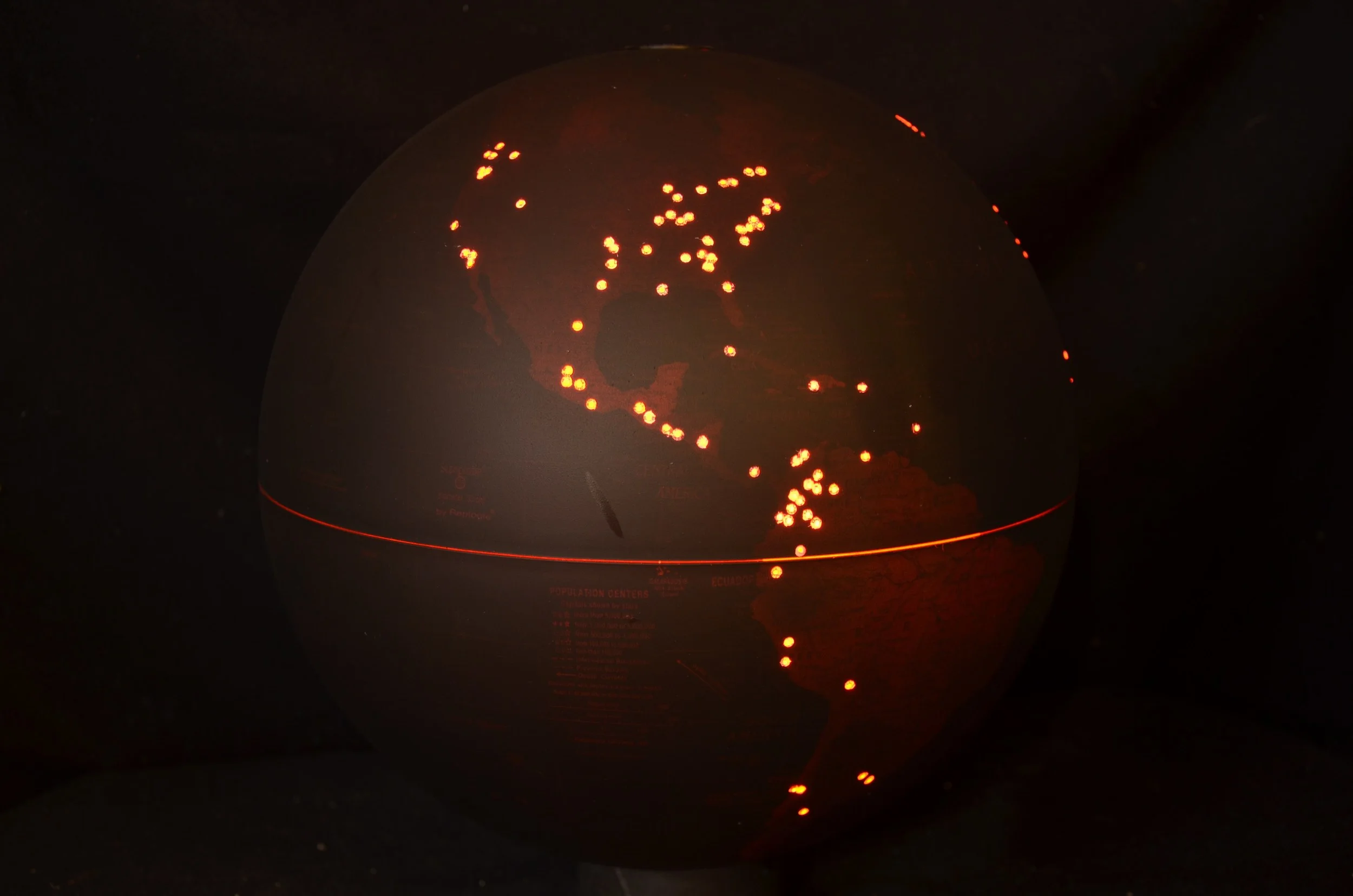[225-9] Terrorism
The ten countries most impacted by terrorism in 2021 are ranked by numbers. Myanmar suffers from state-sponsored terrorism. The next 36 countries on the Global Terrorism Index scale (high and medium impacted) are identified by a black square. The 18 most deadly terrorist acts are highlighted. Deaths decreased 33% since peaking in 2015. 52% of all attacks are not ascribed to a particular terrorist group; 80% occur within 50 km of a conflict zone.
[225-9] Terrorismus
Zahlen identifizieren die zehn Länder die 2021 am meisten unter Terrorismus zu leiden hatten.
In Myanmar wird Terrorismus von staatlicher Seite verübt. Weitere 36 Staaten, die laut des Global Terrorismus Indexes hoch oder mittel betroffen waren, haben schwarze Quadrate. Helle Punkte zeigen wo die 18 Anschläge mit den meisten Todesopfern verübt wurden. Seit 2015 sind die Todesopfer um 33% zurückgegangen. 52% aller Akte können keiner bekannten Terrorgruppe zugeschrieben werden, 80% finden maximal 50km von einer Krisenzone statt.
________________________________________________________________
[225-8] Terrorism, 2016
While it appears that the numbers of acts and people harmed by acts of terrorism is the obvious way to measure the phenomenon, the metric is also highly misleading, as terror itself depends on the scope of media distribution of the act. Meanwhile, no international organization, notably the UN, has come to an agreement on a definition of terrorism. The "deliberate targeting of civilians" is being considered. The locations of terrorist attacks Post-World War II are designated by white dots.
[225-7] Terrorism, 2016
While it appears that the numbers of incidents and number of people harmed by acts of terrorism is the obvious way to measure the phenomenon, it is also highly misleading, as terror itself depends on the scope of media distribution of the act. Meanwhile, no international organization, notably the UN, has come to an agreement on a definition of terrorism. The "deliberate targeting of civilians" is being considered. The locations of terrorist attacks Post-World War II are designated by white dots.
[225-6] Terrorism, 2011
While it appears that the amount of acts and people harmed by acts of terrorism is the obvious way to measure the phenomenon, it is also highly misleading, as terror itself depends on the scope of media distribution of the act. Meanwhile, no international organization, notably the UN, has come to an agreement on a definition of terrorism. The "deliberate targeting of civilians" is being considered. The locations of terrorist attacks Post-World War II are designated by red dots.
[225-3] Terrorism, 2003
Darkened areas indicate presence of terrorist groups. Underlined groups are active in more than one country, underscoring their multinational and transnational character and ambition.
[225] Terrorism, 1999
Only the terrorist groups which are known by their initials are shown, which are most groups.











